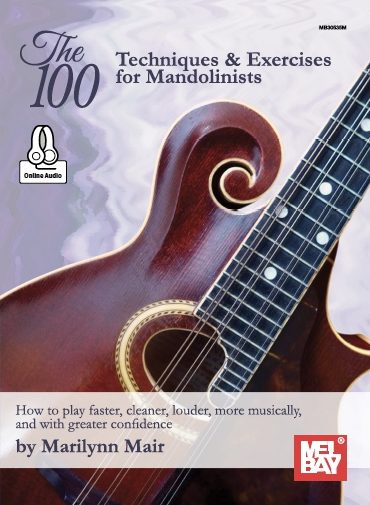This article was originally published in Mandolin Magazine, Winter 2005.
Download a pdf of the music that accompanies this article: ToAWildRose_solo
The Romantic Era, that ran from 1825 to 1900, was a period of great musical innovation and originality. Composers began to move away from the universal formal style of the Classical Era, to create more personal works. Some music of the Romantic Era was dramatic, ambitious, and showy, like the symphonies of Berlioz and Liszt, or the operas of Verdi and Puccini. Other pieces were intimate and poetic, like the piano music of Chopin and the art songs of Schubert. But regardless of style, composers in the 19th century considered themselves to be heroes and geniuses — artists who created masterpieces of sound rather than craftsman who created musical entertainment.
Romantic music was inspired by feeling, and compositions began to paint pictures, tell stories, and present emotions — bittersweet, joyful, or turbulent. The days of the Classical-Era’s “absolute music,” enjoyed for its logic and elegance, were gone. In its place a host of rhapsodies, tone poems, and program music sprang up, inspired by nature, love, death, and fantasy. Imagination was valued, rules were broken, and composers created a colorful body of music that, although often controversial in its time, is much beloved today.
The mandolinist in the 19th century also became a more heroic persona. Virtuoso performers were found throughout Europe, and solo repertoire was written to show off their abilities. Along with flying fingers and jaw-dropping runs, romantic audiences also appreciated musicians who could create an intimate ambiance and convey emotion with their instrument. For mandolinists, a good tremolo was essential to spin out a nuanced expressive line, and duo-style playing, that added chords to the melody, allowed a solo performer the same autonomy that a pianist or guitarist enjoyed. Mandolinists, like other musicians of the era, used rubato — holding back or rushing the tempo — along with crescendos and decrescendos to imbue their interpretations with feeling. To play the notes was no longer enough; mandolinists had to fashion deeply personal performances that would create a mood and truly touch an audience.
For my Romantic-Era column, in honor of these 19th-century artists of the mandolin, I’ve chosen a small poetic gem by Edward MacDowell to arrange as a mandolin solo. MacDowell (1861-1908), was considered one of the finest American composers of the late 19th century, and a brilliant pianist who often appeared as a soloist with the Boston Symphony Orchestra. In 1896, he wrote a group of short piano pieces entitled “Woodland Sketches,” that remains one of his most famous works today. The first piece in the collection, “To a Wild Rose,” is a perfect example of a Romantic miniature, featuring a lovely haunting melody inspired by nature. Instead of designating a tempo marking for the piece, like Allegro or Largo, MacDowell indicatd that it should be played “with simple tenderness”.
So that’s your challenge: to play the piece with emotion, using rubato and dynamic variety to create a feeling of tenderness and nostalgia. For those of you who aren’t up to the rigors of duo-style just yet, grab a friend to play the accompaniment, written with stems down, and concentrate on learning the melody, written with stems up. The piece is lovely either way, holding a delicate vision of spring to inspire us as we battle through the snows of winter.
Go back to mandolin articles page




